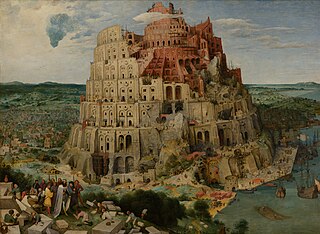 W
WA ziggurat is a type of massive structure built in ancient Mesopotamia. It has the form of a terraced compound of successively receding stories or levels. Notable ziggurats include the Great Ziggurat of Ur near Nasiriyah, the Ziggurat of Aqar Quf near Baghdad, the now destroyed Etemenanki in Babylon, Chogha Zanbil in Khūzestān and Sialk. The Sumerians believed that the Gods lived in the temple at the top of the Ziggurats, so only priests and other highly respected individuals could enter. Society offered them many things such as music, harvest, and creating devotional statues to leave in the temple.
 W
WIn 1921 the Austrian architect Adolf Loos completed a plan for a mausoleum for the Austrian Czech art historian Max Dvořák, who had died earlier that year. The mausoleum was never built.
 W
WChogha Zanbil is an ancient Elamite complex in the Khuzestan province of Iran. It is one of the few existing ziggurats outside Mesopotamia. It lies approximately 30 km (19 mi) southeast of Susa and 80 km (50 mi) north of Ahvaz.
 W
WDur-Kurigalzu was a city in southern Mesopotamia, near the confluence of the Tigris and Diyala rivers, about 30 kilometres (19 mi) west of the center of Baghdad. It was founded by a Kassite king of Babylon, Kurigalzu I, some time in the 14th century BC, and was abandoned after the fall of the Kassite dynasty. The prefix Dur- is an Akkadian term meaning "fortress of", while the Kassite royal name Kurigalzu, since it is repeated in the Kassite king list, may have a descriptive meaning as an epithet, such as "herder of the folk ". The city contained a ziggurat and temples dedicated to Mesopotamian gods, as well as a royal palace. The ziggurat was unusually well-preserved, standing to a height of about 52 metres (171 ft).
 W
WDur-Kurigalzu was a city in southern Mesopotamia, near the confluence of the Tigris and Diyala rivers, about 30 kilometres (19 mi) west of the center of Baghdad. It was founded by a Kassite king of Babylon, Kurigalzu I, some time in the 14th century BC, and was abandoned after the fall of the Kassite dynasty. The prefix Dur- is an Akkadian term meaning "fortress of", while the Kassite royal name Kurigalzu, since it is repeated in the Kassite king list, may have a descriptive meaning as an epithet, such as "herder of the folk ". The city contained a ziggurat and temples dedicated to Mesopotamian gods, as well as a royal palace. The ziggurat was unusually well-preserved, standing to a height of about 52 metres (171 ft).
 W
WEtemenanki was a ziggurat dedicated to Marduk in the ancient city of Babylon. It now exists only in ruins, located about 90 kilometres (56 mi) south of Baghdad, Iraq.
 W
WTepe Sialk is a large ancient archeological site in a suburb of the city of Kashan, Isfahan Province, in central Iran, close to Fin Garden. The culture that inhabited this area has been linked to the Zayandeh River Culture.
 W
WThe Tower of Babel narrative in Genesis 11:1–9 is an origin myth meant to explain why the world's peoples speak different languages.
 W
WThe Ziggurat of Ur is a Neo-Sumerian ziggurat in what was the city of Ur near Nasiriyah, in present-day Dhi Qar Province, Iraq. The structure was built during the Early Bronze Age but had crumbled to ruins by the 6th century BC of the Neo-Babylonian period, when it was restored by King Nabonidus.